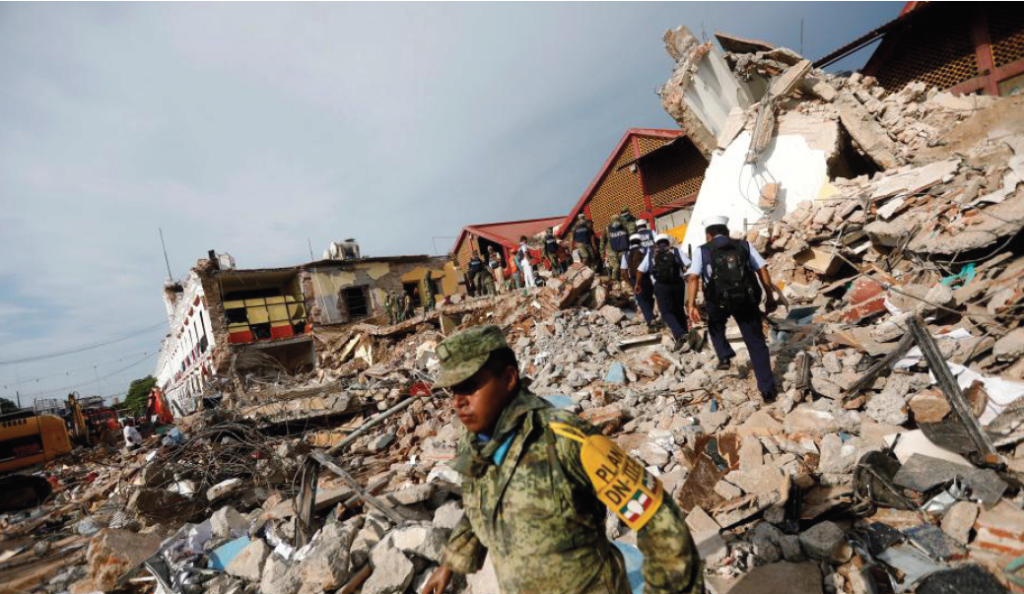On September 19th, a devastating earthquake rocked much of central Mexico. Beginning in Puebla, Mexico, the 7.1 magnitude quake quickly expanded to include surrounding areas such as Mexico City. The result was catastrophic — more than forty buildings collapsed, 355 people were killed (214 of them in Mexico City), 6,000 were injured, and still hundreds more that have yet to be rescued. Despite the immense size of this cataclysmic event, SASMEX (Mexican Seismic Alert System) only provided the government a twenty second advance notice that an earthquake was about to hit the capital. This was not nearly enough time for state officials to react or provide the citizens with safety.
This earthquake was the second one in a matter of two weeks for Mexican natives. On September 9th, an 8.1 magnitude earthquake struck the southeast coast of Mexico which caused catastrophic damage to the surrounding cities. The earthquake was felt a thousand miles away in Mexico City and was later considered the most powerful Mexican earthquake in a century. Both of these earthquakes have left Mexican cities in shambles and the government looking for help.
Meanwhile, the United States have been dealing with their own set of natural disasters with Hurricanes Harvey, Irma, Jose, and Maria, killing nearly 100 people and destroying thousands of homes. After Hurricane Harvey, which flooded much of the Houston area, Mexico agreed to send aid to the ailing city. Carlos Sada, Mexico’s undersecretary for North American relations said, “Texas and Mexico share more than half the border. There are families, marriages, businesses that bind our two sides. This is about being good neighbors.”
This kind gesture came from a time where relations between Mexico and the United States have been strained due to President Trump’s P’00 recent attempts to propose a wall between the Mexican-American border. Furthermore, the president is adamant that Mexico will pay for the establishment of this wall. Trump has also threatened to leave NAFTA (North American Free Trade Agreement), an agreement that reduces tariff on any supplies being transported between the countries. The removal of NAFTA would further increase the already rocky relations that the United States with Mexico.
This all changed when the 8.1 magnitude earthquake struck killing 90 people. The quake was followed by a category 1 hurricane that formed deadly mudslides killing even more citizens. Then the devastating 7.1 earthquake hit. As a result, Mexico revoked its agreement to send aid to Houston, and the country began focusing on recovering from their own natural disaster. On September 14th, Donald Trump tweeted: “Spoke to President of Mexico to give condolences on terrible earthquake. Unable to reach for 3 days b/c of his cell phone reception at site.”As a result, The United States Director of Defense sent an elite group of men on a disaster team to help Mexico City recover from the earthquake.
It is unclear what Donald Trump’s ultimate motive is by sending aid to Mexico. He could simply be trying to return Mexican president’s gesture, even though they never did provide any aid to the Houston area. Trump could be sending supplies and people to help in the hope Mexico will be more compliant so the next time he wants to build a wall. Only time will tell to see how these events affect the future.
The amount of camaraderie that was shown by both the United States and Mexico over the last month is commendable. Hopefully, both countries will continue to improve relations in the future. Maybe now they realize that Mexican-American relations are not just about who pays for a wall, they are about keeping people safe, and that should always be a top priority.





